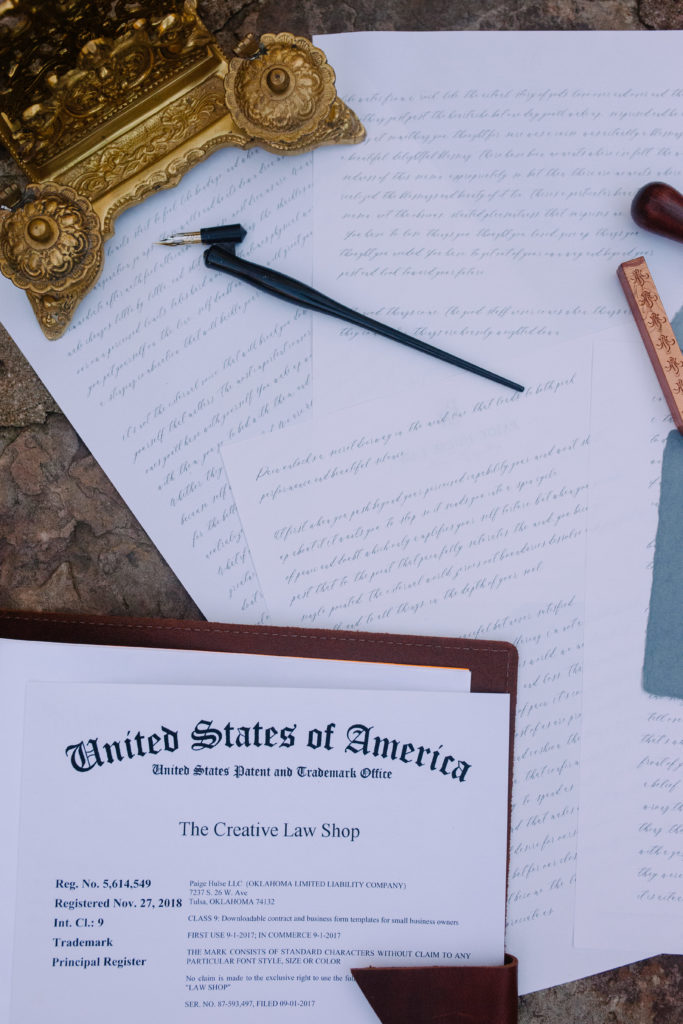A trademark is any word, phrase, symbol, design, or any combination thereof, that identifies your brand of products or services. It can be the name of your product, your slogan, or even your logo. Trademarking is one of the most critical aspects of owning a business that every entrepreneur needs to know about.
Let’s use Disney, a company with over 6,000 trademarks, as an example. The name Disney — and most variations of the name – is a trademark. The castle logo is also a trademark. The slogan, “Where Dreams Come True,” is a trademark. Even Mickey Mouse, as an indicator for the brand, is a trademark. This means that no other competing company would be able to create a slogan that could be confused with “Where Dreams Come True”, etc. Because Disney owns these trademarks, they’ve protected their brand’s identity from being stolen.
Simply put, a trademark is the legacy of your brand.
A trademark works in two important ways: it distinguishes your product from others that may be similar, and it protects your brand to help you guard against counterfeiting and fraud.
Although trademarks are often mentioned alongside other intellectual property protections such as patents, and copyrights, they are all quite distinct.
A trademark protects your brand’s unique product or service, whereas patents and copyrights protect your products. A patent protects an invention or new technology from being copied, and a copyright protects original works of authorship such as paintings, photographs, books, or movies. Simply put, a patent protects inventions and a copyright protects creative works.
Technically, you have a trademark as soon as you start using that name, slogan or logo; however, your rights to your trademark are greatly limited until you register your trademark with The United States Patent and Trademark Office (USPTO). Locking in a trademark on the federal level is the only way to ensure that your brand will endure.
However, not all trademarks are created equal. More distinctive or easily distinguishable trademarks are granted more protections.

The strength of your trademark, or the ability of the mark to identify and differentiate your product from other similar products, is measured by the inherent distinctness of the mark and the distinctness of the mark in the marketplace.
A mark is inherently distinctive if it is fanciful, arbitrary, or suggestive.
A fanciful trademark is a mark invented to function solely as a trademark with no connection to a characteristic of your brand. Therefore, as the mark has no connection to your products, it is unique and does not compete with other companies that may offer products similar to yours. Ergo, a fanciful mark is very strong and is the easiest category to obtain trademark protection under. Examples of a fanciful mark include Polaroid, Nike, and Exxon.
An arbitrary trademark, unlike a fanciful mark which usually consists of a word created for your product, contains words or symbols that already exist but have no preexisting connection to your product. The best example of an arbitrary trademark is Apple. The word apple already existed before it was trademarked, but it had no relation to computers and phones.
A suggestive trademark implies the product you are offering without clearly describing your product in the name. Customers must use their imagination to conclude the product you offer based upon the trademark name. Although suggestive marks are inherently distinctive, they generally receive less legal production than the other inherently distinctive marks because they are less distinct. An example of a suggestive mark is Netflix. The name’s components net and flix suggest an online movie platform.
Merely descriptive marks and generic terms are not eligible for trademark as they are too common and are freely available for public use.
Not inherently distinctive marks, or marks that are merely descriptive, describe characteristics of your product and are not distinct enough to be eligible for trademark. However, they can acquire distinctness in the marketplace with a developed secondary meaning and become eligible for a trademark, in certain circumstances.
A generic term is not eligible for a trademark. A term is determined to be generic if consumers use that term to refer to that product. Examples of generic terms are Band-aid, footlong sandwiches, and aspirin.
It is critical to determine if your mark is too generic before you spend time and money filing for a trademark with the USPTO. One of the best ways to do this? Have a trademark attorney run a due diligence search, and help you in determining whether a name is appropriate for use or not.
Trademark law is constantly evolving, and it must be navigated carefully by a knowledgeable attorney. To me, it is a giant game of strategy where the ultimate objective is to protect my client’s business legacy. If you have any further questions, consider reading the next article in our Trademark content series, “Trademark Symbols” or feel free to contact me by booking a consultation at www.paigehulse.com/contact.
LEAVE A COMMENT
View Comments